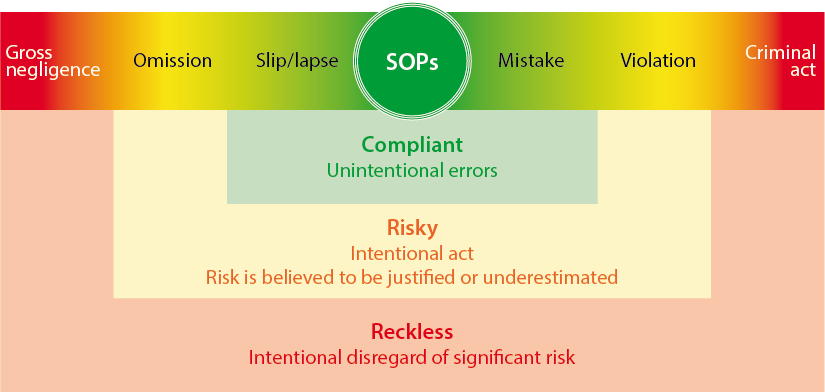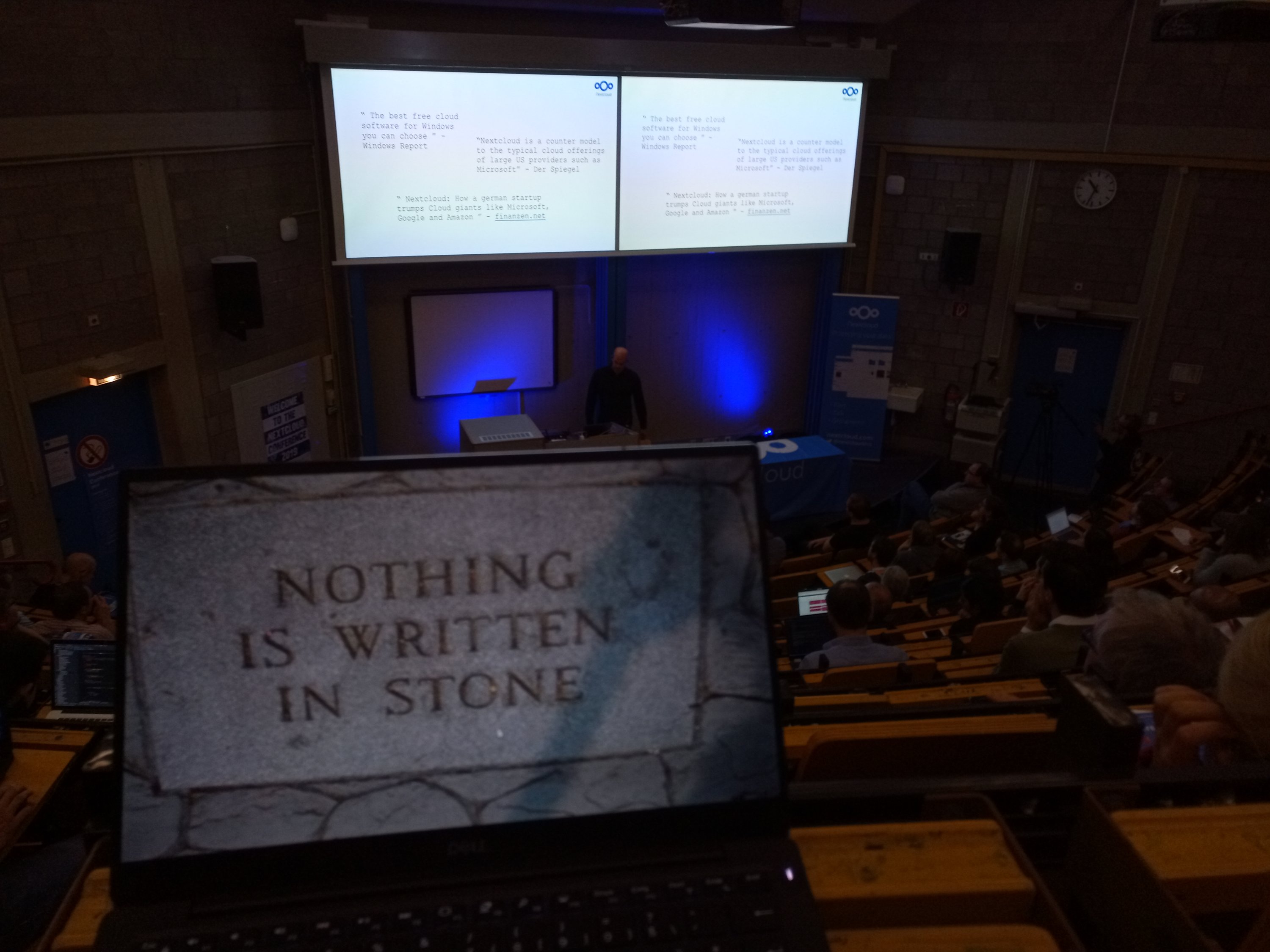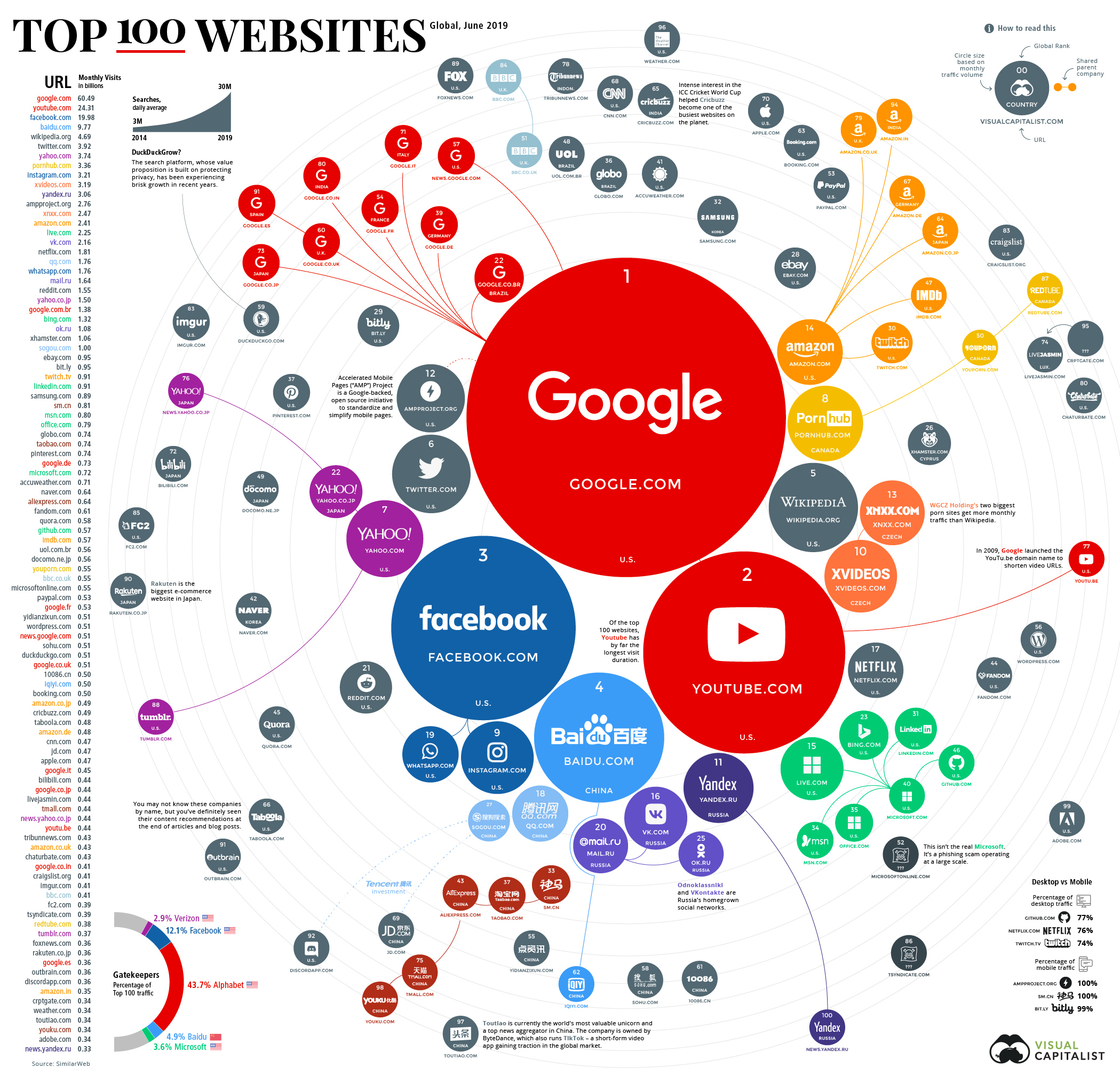
Author: mfeilner
Richard Stallman and the Fall of the Clueless Nerd | WIRED
#flogw: Two French climate models consistently predict a pronounced global warming | CNRS
Aerospace and the Normalization of Deviance …
Reality update: Normalization of Deviance – Flight Safety Foundation … :
“Noncompliance with standard operating procedures (SOPs) — especially tolerance of unstabilized approaches — is a serious impediment to further reduction of accident risk, according to United Airlines safety leaders.
During his April presentation to the World Aviation Training Conference and Tradeshow (WATS 2015) in Orlando, Florida, U.S., Chris Sharber, a first officer and flight simulator instructor–Boeing 777 fleet, at the United Airlines Training Center in Denver, described the issue as invisible and insidious.
United Airlines safety leaders echoed this theme in a keynote address and in presentations about analytical techniques and related insights from the company’s safety management system (SMS), including analysis of flight crews’ voluntary safety reports.
“We have somewhere between 11,000 and 12,000 pilots. Our new-hire department will bring another 1,000 pilots on board in the next 12 to 15 months,” Sharber said. “One of the challenges that you face with that many pilots, of course, is SOP compliance. How do you influence a group of 11,000 individuals to focus on SOP compliance, to maintain the tight standardization that’s required to maintain safe operations in a global airline?””
(…)
“Intentional Noncompliance Flight crews engage in intentional noncompliance — and sometimes self-justify this behavior — out of a variety of motivations. “Maybe it’s a bad SOP. Maybe there are competing priorities. Maybe it just doesn’t work. It’s not functional. … It’s not that important. It doesn’t really matter. I might [take a] shortcut just because I’m trying to save time,” he said. “[Or pilots rationalize], ‘I just don’t like it. I like the way we did it before. I’ve got a better way of doing things. I think this is a bad idea. I’m just not going to do it.” These occur with a perceived lack of consequences. The LOSA Collaborative’s latest data analysis suggests that acts of intentional noncompliance occur on between 40 to 60 percent of flights, or about half, on average.”
Reality update: Normalization of Deviance – Flight Safety Foundation … :
 “
“
Neuland, 2019: Hausdurchsuchungen wegen anonymer Anzeige gegen tarnkappe.info
Reality update: Hausdurchsuchung bei Tarnkappe.info wegen angeblichem Drogenhandel … :
“Heute um ca. 14 Uhr haben insgesamt fünf Mitarbeiter der Bergisch Gladbacher Polizei eine Hausdurchsuchung bei Tarnkappe.info durchgeführt. Beschlagnahmt wurden alle vier technischen Geräte des Betreibers Lars Sobiraj. Der Durchsuchungsbeschluss vom AG Köln hat man damit begründet, dass in unserem Forum angeblich Drogen vermittelt wurden. Vom Verdächtigen wurden sogar die Fingerabdrücke genommen und Fotos erstellt. Ein anonymer Hinweisgeber hat sich an die Polizei in Bergisch Gladbach gewendet. Er will angeblich mittels Screenshots bewiesen haben, dass wir bei uns im Forum Drogen vermittelt haben. Somit hätte sich der Betreiber wegen des unerlaubten Handels mit BTM-pflichtigen Stoffen strafbar gemacht.”
[…]
“Kommentar von Lars Sobiraj:
Die Vorwürfe sind einfach hanebüchen. Ich bin verwundert, dass der zuständige Richter am AG Köln den Beschluss unterzeichnet, bzw. die Staatsanwältin überhaupt eine Durchsuchung angeordnet hat. Beim persönlichen Gespräch sagte mir der leitende Ermittler, er habe bei der Durchsicht des Forums von Tarnkappe.info überhaupt keine Anhaltspunkte für ein illegales Verhalten in irgendeiner Art finden können. Auch hätte ich bzw. meine Ehefrau bei der Durchsuchung nicht den Eindruck gemacht, dass wir hier etwas Illegales tun. Zudem sagte der KOK, er habe gesehen, dass ich alle Foren-Nutzer dazu aufgerufen habe, sich an die in Deutschland gültige Rechtslage zu halten.“
Blockchain Update: Very Expensive, NoT SuccessFul, no Sense, no Reason. Here’s the hype.
Blockchain Reality update:
0) (2019-06-02) The honorable Bruce Schneier says: There’s No Good Reason to Trust Blockchain Technology | WIRED … :
“There’s No Good Reason to Trust Blockchain Technology Opinion: Cryptocurrencies are useless. Blockchain solutions are frequently much worse than the systems they replace. Here’s why.”
1) (2018-11-30) Blockchain study finds 0.00% success rate and vendors don’t call back when asked for evidence • The Register … :
“Emergent Tech Blockchain study finds 0.00% success rate and vendors don’t call back when asked for evidence Where is your distributed ledger technology now? By Andrew Orlowski”
2) (2019-05-29) Blockchain Settlement Was Slow, Costly in Trial, Weidmann Says – Bloomberg … :
“Cryptocurrencies Blockchain Settlement Was Slow, Costly in Trial, Weidmann Says
A trial project using blockchain to transfer and settle securities and cash proved more costly and less speedy than the traditional way, Germany’s central bank president said.”
3) (2019-02-26) You Do Not Need Blockchain: Eight Popular Use Cases And Why They Do Not Work … :
“You Do Not Need Blockchain: Eight Popular Use Cases And Why They Do Not Work”
(via Slashdot)
4) (2019-05-29) Blockchain officially confirmed as slower and more expensive … :
“The Blockchain solutions did not improve in all respects: the process took a little longer and resulted in relatively high calculation costs, Weidmann said in Frankfurt on Wednesday.” Similar experiences have been made elsewhere in the financial sector. Despite many tests of blockchain-based prototypes, a real breakthrough in the application lacks so far. ”
Graceful? The Story of a Supertanker hunted by the US (german)
Reality update: Die unglaubliche Reise eines verrückten Supertankers | Telepolis … :
“Wie so viele seiner Kollegen fuhr er mal unter der Flagge der Marshallinseln, mal unter der Panamas. Mal gehört er einer amerikanischen Schiff-Holding, mal einem Unternehmen aus Dortmund. Aber egal in wessen Auftrag der Tanker auch gerade unterwegs war, er machte immer dasselbe: Er transportierte Rohöl von einem Land zum anderen. Um genau zu sein 2,084 Millionen Barrel Rohöl. Zum Vergleich: Das entspricht in etwa dem Inhalt von 130 Olympischen Schwimmbecken oder dem Rohöl-Bedarf der Bundesrepublik pro Tag.“
Das Internet ist zu einem Marktplatz verkommen
“Die Anfänge des Internets wurden von optimistischen Visionen einer nicht kommerziellen Informationsgesellschaft begleitet, in der Wissen ein öffentliches Gut und das Internet ein herrschaftsfreier Raum1 ist, mit dem Zweck wissenschaftlichen Austauschs, Kommunikation, Vernetzung und Verbreitung von Informationen. In den 1990er Jahren wurde das Internet dann für die kommerzielle Nutzung geöffnet.
Knapp 30 Jahre später ist ein Großteil des Internets zum Marktplatz geworden: Onlineshops und kommerzielle Plattformen dienen dem Verkauf, die restlichen Webseiten als potenzielle Werbefläche. In diesen Räumen verbringen Menschen durchschnittlich drei Stunden pro Tag. Welche Folgen hat dies für ihr Konsumverhalten, Nachhaltigkeit und unser gesellschaftliches Wertesystem?”
Why the donation system of the US is completely messed up. (MIT/Stallman/Lessig)
One aspect of the Stallman affair these days is how wrong the whole fundraising thing is handled in the US. If an institution has to take money from Type 3 and 4 of Lessig’s quote below, then the system is totally f***d up.
There’s a wonderful quote from Pestalozzi:
“Sie ersäufen die Gerechtigkeit im Mistloch der Gnade.” (as quoted by Thomas Bernhard)
“They are drowning justice in the menure pit of mercy.”
On Joi and MIT – Lessig – Medium … :
“I thank god that I’ve never been obligated to raise money for an institution like MIT, because I know that in every moment of that existence, I would be forced to confront a gap between what I believe is right and what every institution does. And yet, as a person charged with fundraising, I would be pressed to adopt the ethics of the institution, not the ethics of myself. Divide the entities or people who want to give to an institution like MIT into four types.
Type 1 is people like Tom Hanks or Taylor Swift — people who are wealthy and whose wealth comes from nothing but doing good.
Type 2 is entities like Google or Facebook, or people whose wealth comes from those companies. These are people who are wealthy because of their work within companies of ambiguous good. Some love them. Some hate them. Some think they are the key to all that’s evil in the age that’s coming. Some think they are the key to all that will be good.
Type 3 is people who are criminals, but whose wealth does not derive from their crime. This is Epstein, but not just Epstein. It may be that we’ll discover that Epstein got rich by blackmailing people whom he had encouraged or enabled to commit abuse. I doubt it, but it’s possible. Suffice it that when Joi was investigating whether that criminal continued his crime, no one was suggesting that his enormous wealth was the product of blackmail or sex slavery. He was, the world assumed, a brilliant, savant-like investor, who was also a sexual predator.
Type 4 is entities and people whose wealth comes from clearly wrongful or harmful or immoral behavior.”
Owncloud Conference 2019 in Nürnberg
Hey Ownclouders, so sad I can’t be there this year. Have a lot of fun! #occon19
ownCloud Conference 2019 – September 17 to 20, 2019 in Nuremberg … :
“The annual ownCloud conference will happen for the 7th time. We are expecting 200 attendees from all over the world to join us for four days of conference, hacking and learning from the best in the field.“
Guardian: US wants Snowden’s Income from his Memoires
Reality update: US government files civil lawsuit against Snowden over publication of memoir | US news | The Guardian … :
“The lawsuit alleges that Snowden published without submitting the book to the agencies for pre-publication review, “in violation of his express obligations under the agreements he signed”. Additionally, the suit argues that Snowden has given public speeches on intelligence-related matters, “also in violation of his non-disclosure agreements”. Although it does not seek to block publication, the suit aims to recover all proceeds earned.“
Security Theater… Licence Renewal

Brilliant Graphic from the Visual Capitalist: Top 100 Websites in the World
A Mountain that Only lasted for a Few Minutes…
Reality update: Here’s what happened in the impact crater the day it did in the dinos | Ars Technica … :
“Big enough impact craters actually have a knob of uplifted rock in the center that forms due to the incredible shock forces involved. But the very largest impacts—like Chicxulub—end up with a ring of uplifted rock around the center, as if to mark the bulls-eye. Computer modeling, supported by observations of the deepest bedrock in the core, shows that the rock would have bounced around like jelly. Over 10 minutes or so, a new mountain would have soared into the sky before collapsing and spreading out into a raised ring on the crater floor.“
Decadal-scale shifts in soil hydraulic properties as induced by altered precipitation | Science Advances
https://advances.sciencemag.org/content/5/9/eaau6635
Reality update: Decadal-scale shifts in soil hydraulic properties as induced by altered precipitation | Science Advances … :
“Abstract
Soil hydraulic properties influence the partitioning of rainfall into infiltration versus runoff, determine plant-available water, and constrain evapotranspiration. Although rapid changes in soil hydraulic properties from direct human disturbance are well documented, climate change may also induce such shifts on decadal time scales. Using soils from a 25-year precipitation manipulation experiment, we found that a 35% increase in water inputs substantially reduced infiltration rates and modestly increased water retention. We posit that these shifts were catalyzed by greater pore blockage by plant roots and reduced shrink-swell cycles. Given that precipitation regimes are expected to change at accelerating rates globally, shifts in soil structure could occur over broad regions more rapidly than expected and thus alter water storage and movement in numerous terrestrial ecosystems.“
Nextcloud Conference, Berlin.

Sea Life horror
Ship of horrors: life and death on the lawless high seas | World news | The Guardian … :
“Greed, not water, sank the Oyang 70. The ship had tried to swallow too much fish; the ocean swallowed the ship instead. The last men off the drowning ship said that they saw Shin in the wheelhouse, refusing to abandon his post or put on a life jacket. Hugging a pole and clutching his clear bottle, he was muttering in Korean and crying.“
Sind die Menschen zu blöd für eine Demokratie? | Telepolis
Dumping Fukushima’s Radioactive Water Into Pacific Ocean Is ‘Only Option’, Japan Says
Barcelona’s car-free ‘superblocks’ could save hundreds of lives | Cities | The Guardian
That is a goal worth fighting for:


 “
“